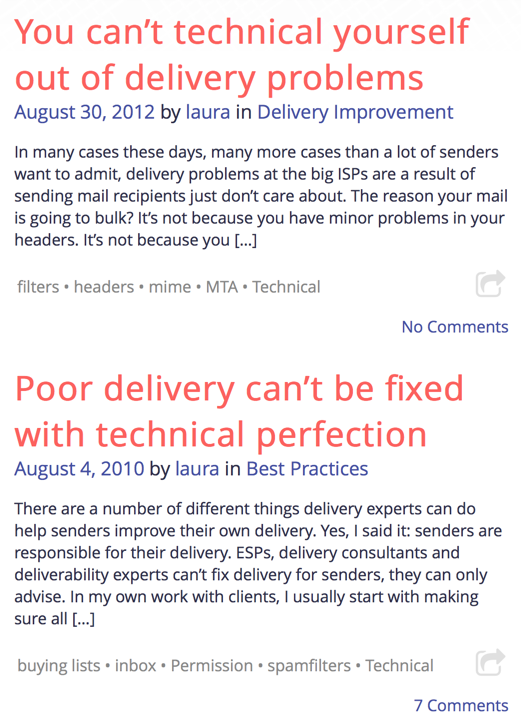Looking forward
I had a number of very good talks with folks at the Email Innovations Summit earlier this week. I’m still digesting it all. It’s clear that getting to the inbox isn’t a solved problem. Around a decade ago I figured that the explosion of complaint feedback loops would make my job obsolete. That more data would mean anyone could manage delivery. That’s not the case for a couple reasons. The biggest is that filters don’t look just at complaints and there aren’t FBLs for all the other factors.
For whatever reason, many companies are still struggling with delivery.
Even more interesting is how changes in filters and inboxes are making it harder to measure delivery. In some ways I feel like we’re losing ground on inbox measurement. Filters changes and will keep changing, both to address emerging threats and to meet the needs and wants of subscribers. Gone are the days where Panels have their problems. Seed lists have their problems. There’s a longer blog post here, but it’s nearly the weekend and I’ve had a long week.
Hope you have something great planned.
